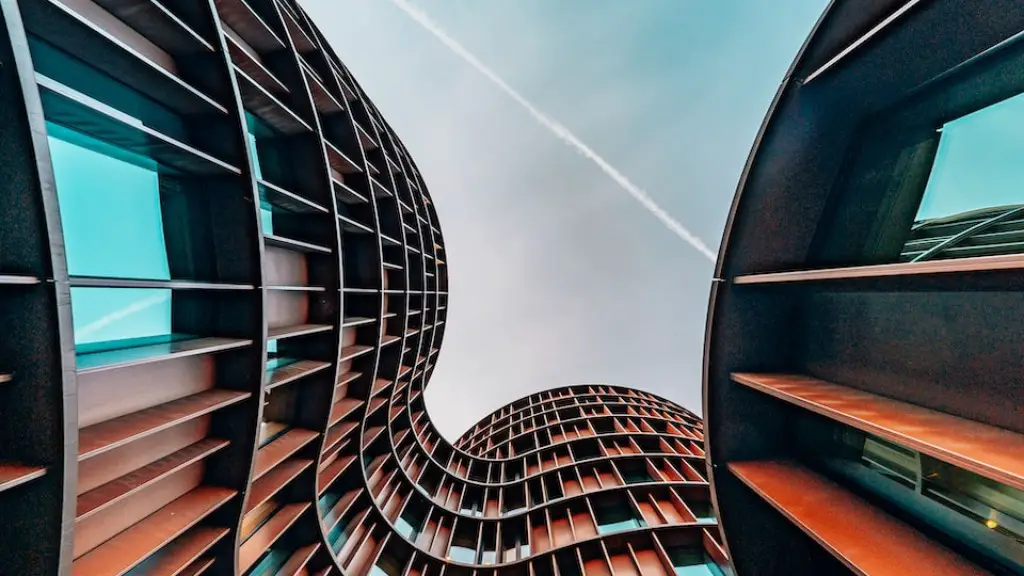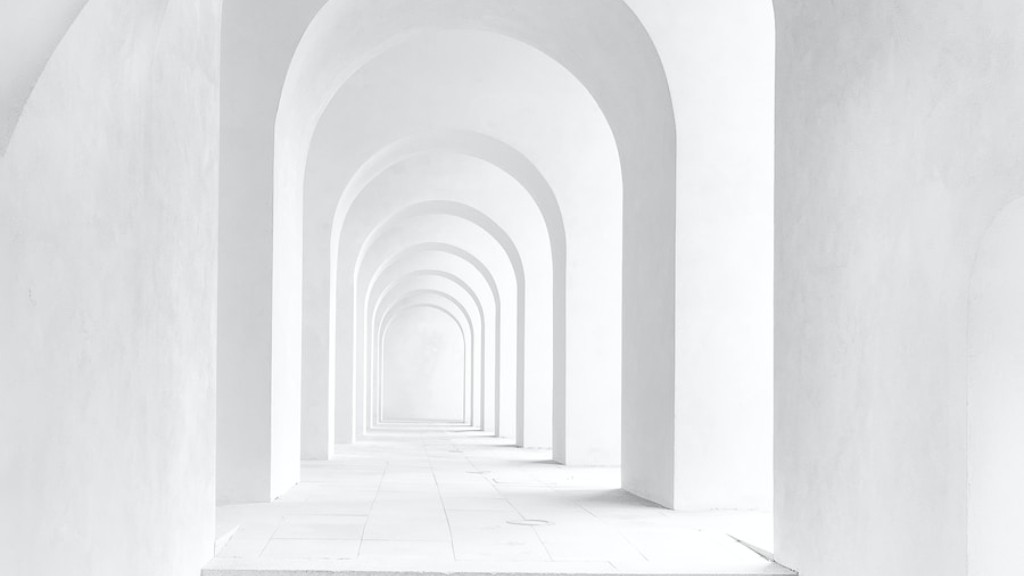How Architecture Affects Mood
Architecture is a powerful creative form that influences mood and emotion. It has a significant psychological impact on people, enabling us to feel inspired, secure, comforted, and welcomed. Furthermore, it can dramatically affect productivity, helping people to perform better, think better, and develop emotionally. In this article, we will delve into how architecture affects mood, looking at the history of architecture, physical and psychological effects, and more.
Throughout history, architecture has been used to communicate and convey messages and meanings. In ancient times, it was employed to demonstrate strength, power, and architecture was used to create a sense of security, comfort, and stability. People drew inspiration from their surroundings, and the art of architecture was used to create strong, everlasting impressions and feelings. For example, the Great Pyramids of Giza and the Hanging Gardens of Babylon were awe-inspiring accomplishments that inspired contemplation, introspection, and reverence among its observers.
In modern society, architecture continues to affect people, but in different ways. Depending on a person’s individual affinities, architecture can evoke various feelings, emotions, and thoughts. People living in modern cities are particularly affected by their surroundings. For instance, they can feel overwhelmed by the hustle and bustle of the street or have their spirits lifted by the beauty of a bridge or a nearby park. By strategically designing, landscaping, and utilizing the urban landscape, city planners are able to create positive moods for the modern city-dweller.
The physical environment can also have a great influence on mood. Studies have shown that exposure to sunlight, fresh air, and natural elements can reduce stress, depression, anxiety, and create feelings of peace and serenity. Additionally, exposure to nature can improve decision-making and problem solving. On the other hand, exposure to noise or overcrowded environments can have a negative effect on one’s mental and emotional states.
Architecture has also been used as a psychological tool, with significant effects on human behavior. Research has indicated that the shapes, textures, and colors used in architecture can affect the human psyche in a variety of ways. For example, smooth curves, bright colors, and reliable materials and shapes can be calming, while sharp angles, bright colors, and overwhelming patterns can agitate people. Similarly, certain shapes can have a positive or negative psychological effect, such as circles – which are often associated with safety – or sharp angles – which can be seen as menacing.
Overall, architecture has a great influence on mood and emotion. By carefully considering the physical and psychological effects of a project, architects can strive to create a space that is both aesthetically pleasing and emotionally beneficial. It is a creative form that enables us to feel inspired, secure, and comfortable. By assessing people’s affinities, embracing natural elements, and considering psychological effects, architecture can be used to create positive, lasting effects on the human psyche.
Therapeutic Effects of Architecture
Another way architecture affects mood is through its therapeutic effects. Studies have shown that certain spaces, shapes, and designs can be used to help people recover from trauma, mitigate stress, reduce anxiety, and elevate moods. In healthcare settings, for example, thoughtful design decisions can have a calming effect on patients and make hospital stays more pleasant.
One of the key elements in therapeutic design is color. Soft, natural colors are thought to have a calming effect on patients, while bright, bold colors can energize. In modern hospitals, psychological effects of shape and color can be found in the flooring and interior accents. For example, curved walls, bright-colored wall decor, and rounded furniture are thought to evoke feelings of safety and security.
As well as in healthcare settings, therapeutic architecture is pervasive in modern-day cities. Greenery, natural light, and calming shapes like circles or curves can be found in parks, city centers, and throughout the urban environment. As well as providing a place to relax, these elements can help reduce stress and anxiety, enabling citizens to go about their day-to-day lives in a productive and positive manner.
Examples of therapeutic architecture can also be found in homes. For instance, many people use different shapes in their living room furniture, textiles, and artwork to create an open, relaxing atmosphere. They also use natural materials like wood, granite, and stone to create a soothing and welcoming environment for visitors. These elements can help to reduce stress, anxiety, and create a positive atmosphere for family gatherings.
Architectural Trends
Due to the ever-changing nature of architecture, certain trends can have a dramatic effect on mood. For example, in the twentieth-century, modernist tendencies emphasized the value of openness, transparency, and ‘Less is More’. As a result, vast amounts of glass, open-plan living, and minimalistic decor became popular in the homes and offices of many. This style of design is thought to create feelings of lightness, spaciousness, and optimism.
Similarly, in the 21st century, eco-friendly and sustainable materials, furnishings, and lighting have become increasingly popular in the architectural realm. For example, natural materials such as wood and stone are being used in place of steel and glass, and renewable energy sources such as solar panels and wind turbines are becoming more commonplace. This trend has had a positive affect on many people, as it allows them to connect with nature and feel more emotionally grounded.
At the same time, technology has had a huge impact on architecture. For example, smart lighting, digital displays, and renewable energy sources are revolutionizing our experience in the built environment. With this technology, people have become more engaged and in-tune with the spaces they inhabit, with many utilizing the digital world to enhance their surroundings. Additionally, the use of Augmented Reality and Virtual Reality in architecture has enabled architects to present their projects in stunning, realistic visuals.
Social Aspects of Architecture
Architecture has an important role to play in our social lives. For instance, in some cultures, architecture can be used to create strong ties among communities. People living in villages and towns are often proud of their buildings, which tend to have culturally-specific shapes, colours, textures, and materials. Through this connection, people not only feel more grounded, but also proud and part of a larger collective.
Certain cities are also renowned for their architecture. One such example is the city of Kyoto, in Japan. As a hub of traditional Japanese culture and architecture, it is home to many shrines, temples, and gardens. Tourists flock to the city to witness its beauty and cultural heritage, while locals feel proud of their cultural achievements.
Architecture can also play a role in how we interact with other people. For example, in recent years, shared workplace facilities have become popular, allowing workers of different backgrounds and opinions to collaborate and innovate together. These designs are thought to create feelings of unity, interconnectivity, and openness, enabling them to make the most of their experience.
Environmental Aspects of Architecture
Architecture has an impact on the environment too. For example, the shape, design, and materials used in a building can affect the local climate. Depending on the material used, certain buildings can stay cool in summer months and warm in winter, reducing the amount of energy used for heating and cooling in the long-term. Architects are also incorporating sustainable materials and renewable energy sources in their projects, helping to reduce the environmental impact of construction.
Architecture can also play a role in conserving wildlife and preserving biodiversity. For instance, architects and urban planners are increasingly incorporating green spaces – such as trees and grass – in the built environment. This not only helps to preserve nature but can also be beneficial to citizens, as greenery is thought to elevate mood and promote feelings of peace and harmony.
Architects are also looking for ways to reduce waste, noise, and pollution. These efforts involve reducing the amount of construction materials used and improving energy efficiency. Moreover, they are being encouraged to use materials that are locally-sourced and recyclable, which reduces the environmental impact of construction.
Influence of Technology on Architecture
Technology has had a huge impact on the practice of architecture, enabling architects to create bold, efficient, and sustainable designs. For example, thanks to advances in CAD software, architects are now able to plan, design, and construct buildings more quickly and with precision. 3D printing has also enabled architects to construct challenging designs without the need for traditional methods.
Moreover, virtual reality and augmented reality are now being used in architecture, enabling architects to showcase their designs in fully-immersive, realistic visuals. These technologies allow architects to view their design from any angle, examine finishes up close, and detect any mistakes. This goes beyond aesthetics, too; these technologies are now being used to assess building safety, analyze energy efficiency, and observe how buildings will age over time.
In addition, digital technology has opened up the world of architecture to an even wider audience. Architects, designers, and clients are now able to collaborate more effectively and increase the visibility of their projects to a global audience. Thanks to digital platforms, sharing work, seeking feedback, and connecting with people has never been easier.





